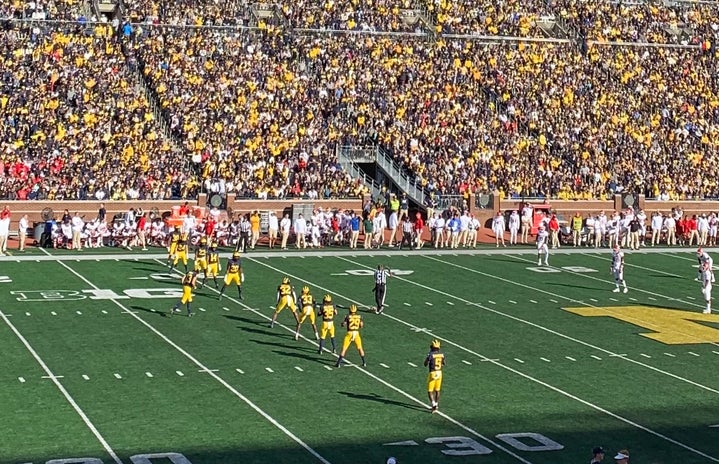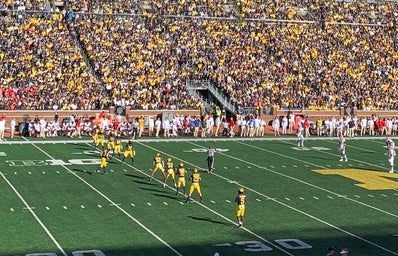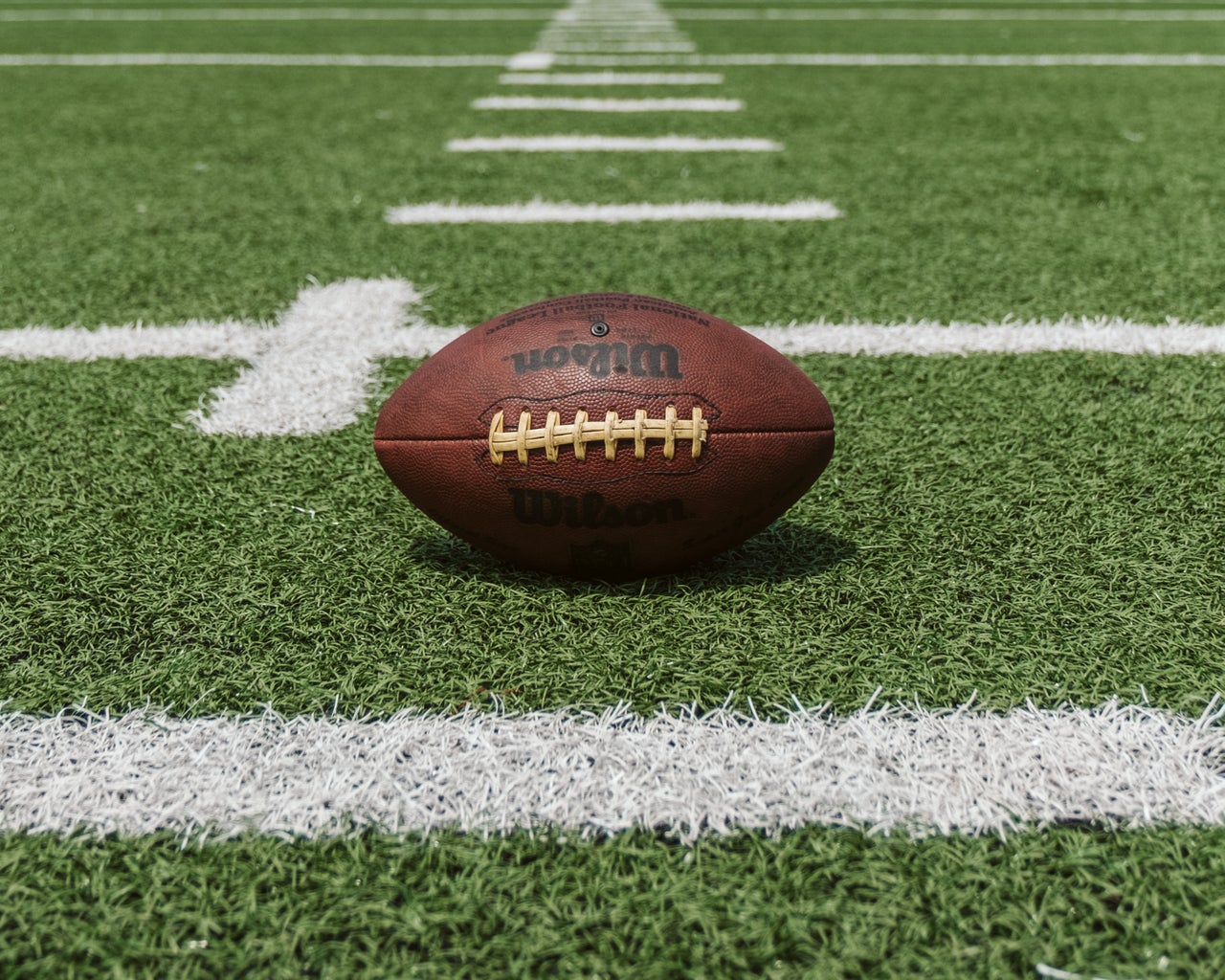This past Saturday over Thanksgiving break, my friends and I, along with 17 million others (according to my friend Christa), tuned in to watch the Michigan Wolverines absolutely embarrass the worst football team in the NCAA, also known as Ohio State University. The win was a huge moral victory for the team and proved that the blowout last year (42-27) was no fluke. It also secured the Wolverines a spot in the Big 10 Championship game taking place on Dec. 3 in Indianapolis. So, if you are planning to watch UMich secure a back-to-back Big 10 title, here’s a little guide to help you through the game.
First, we have to get a few basics out of the way. If you’ve been keeping up this season, you may know these but for those who may need a refresher:
Football is played on a 100-yard field, broken up into 10-yard sections. The team with the ball is the offense. The other team is the defense. Each team has 11 players on the field at a time. A coin toss determines who starts with the ball. At each end of the field is the end zone. When the offense crosses the end zone with the ball they score a touchdown.
Now if you’ve watched a few games this season you may have noticed a bunch of different numbers on the scoreboard. The obvious ones are the time and the score. Games are broken up into four 15-minute quarters with a 20-minute halftime between the second and third quarters. To understand the other numbers we have to go over what a 1st down is.
The offense has four chances to get the ball to move 10 yards forward on the field. These chances are referred to as “downs”—1st, 2nd, 3rd, and 4th down. So at the beginning of the 1st down, the scoreboard will say “1st & 10,” meaning the team is on their 1st chance. If it says “2nd & 7,” that means the offense is on their second chance and they have to move the ball 7 more yards before they get a fresh set of downs. The line of scrimmage refers to the yard on the field that the ball starts on.
If a team fails to reach the 10 yards after their 4th attempt, the other team gets the ball right where the offense left it. That is why typically if the offense is really far away from the opposite endzone, they will punt (kick) the ball away to the other team. If the offense is close enough to the end zone, they will let the kicker try to kick the ball and get it through the yellow goalposts to score a field goal, which is worth 3 points.

Touchdown Michigan! Touchdowns are scored when the offense crosses the ball over the end zone they are facing. Touchdowns are worth 6 points. After scoring, the team is allowed to either kick the ball through the goalposts for 1 point or get the ball into the end zone from 3 yards away for 2 points—a two-point conversion.
An aspect of football that can be very confusing, even for seasoned viewers, is the penalties. The referees indicate a penalty by throwing a stupid little yellow flag. There are a bunch of different penalties that exist so we’re just going to go over a few of the main ones. The most common penalty is probably a holding penalty. Holding happens when a member of the offense or defense illegally uses their hands to restrain another player who doesn’t have the ball.
Another common penalty is a false start or offsides. False start penalties occur when a member of the offense starts moving before the ball is given to the quarterback. Offsides are when a defensive player crosses the line of scrimmage before the ball is given to the quarterback. Pass interference is when a player purposefully impedes the intended receiver’s ability to catch the football, without attempting to catch the ball themselves. But there is a trick to understanding all of the penalties. If a penalty is given to the other team: clap and cheer. And if a penalty is given to your team, throw your hands in the air and shout “WHERE?!” Even if you know why.

For all my Michigan fans out there, here’s a quick player summary so you know who to look out for.
#9 JJ McCarthy. The Michigan offense is led by the cutie patootie Sophomore JJ McCarthy. JJ is the quarterback which means he is given the ball at the start of each play and either hand it off to someone who runs the ball, passes it to someone, or runs the ball himself.
#6 Cornelius Johnson. Cornelius Johnson is my personal favorite player and has been for 2 years. He is a wide receiver for Michigan, meaning he runs down the field and catches passes thrown by JJ. Cornelius had a big game last week against OSU, scoring 2 huge touchdowns. He’ll be an important part of Michigan’s offense, especially with running back stud, Blake Corum, being out due to injury.
#13 Jake Moody. Money Moody is the best kicker in the entire world. Moody kicked the game-winning field goal in the game against Illinois with just 9 seconds left on the clock. That kick also gave Moody the school record for career field goals and tied the record for field goals in a single season.
If you’ve made it this far and still feel lost, don’t worry, just randomly shout out, “JJ All Day,” “Money Moody,” “Schooooon,” and “Go Blue” and you’ll be just fine.



